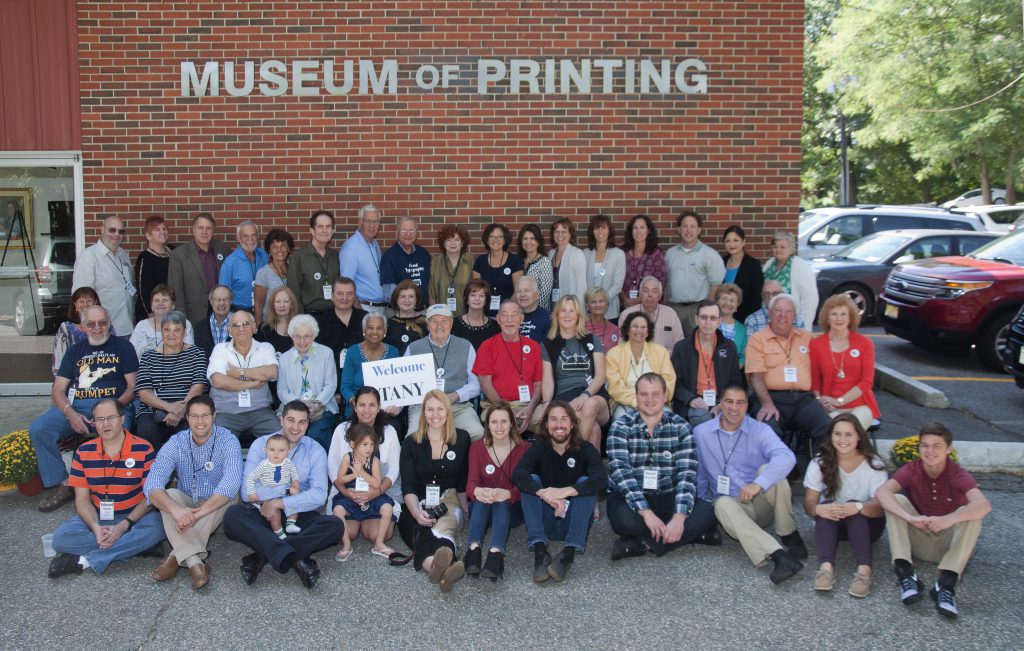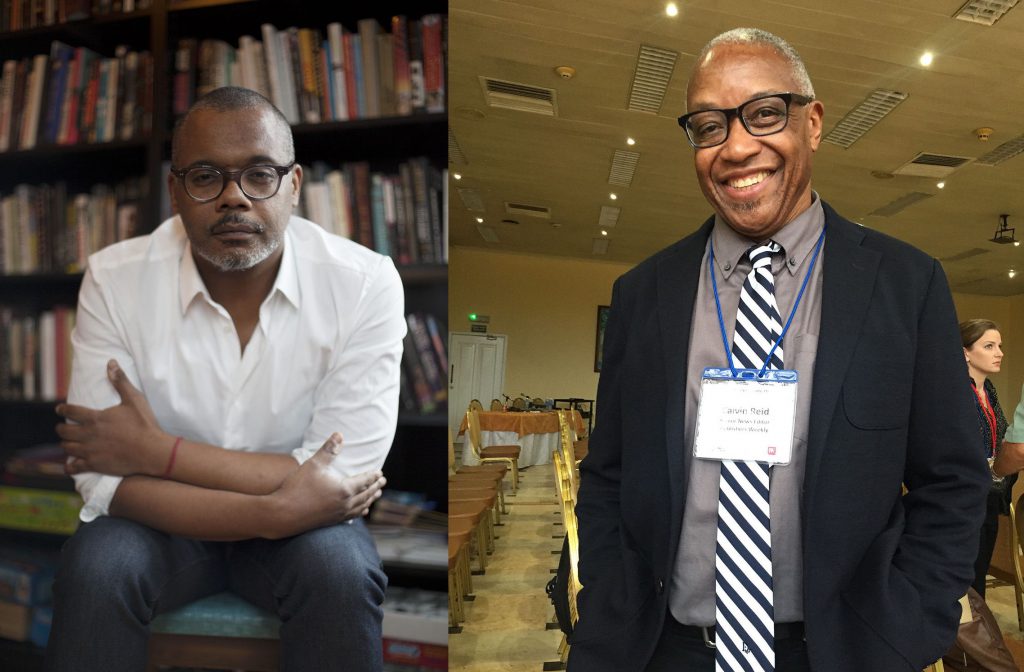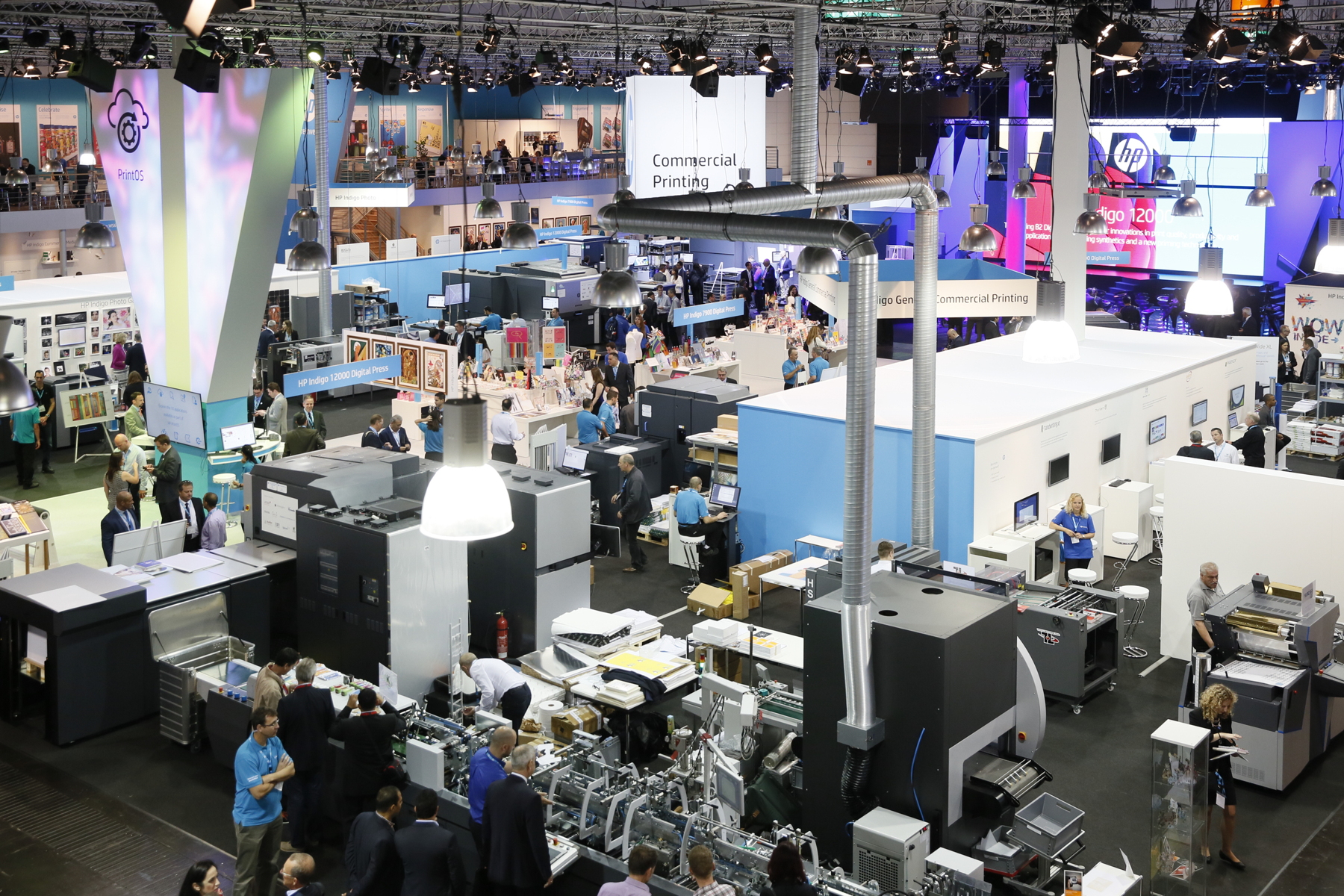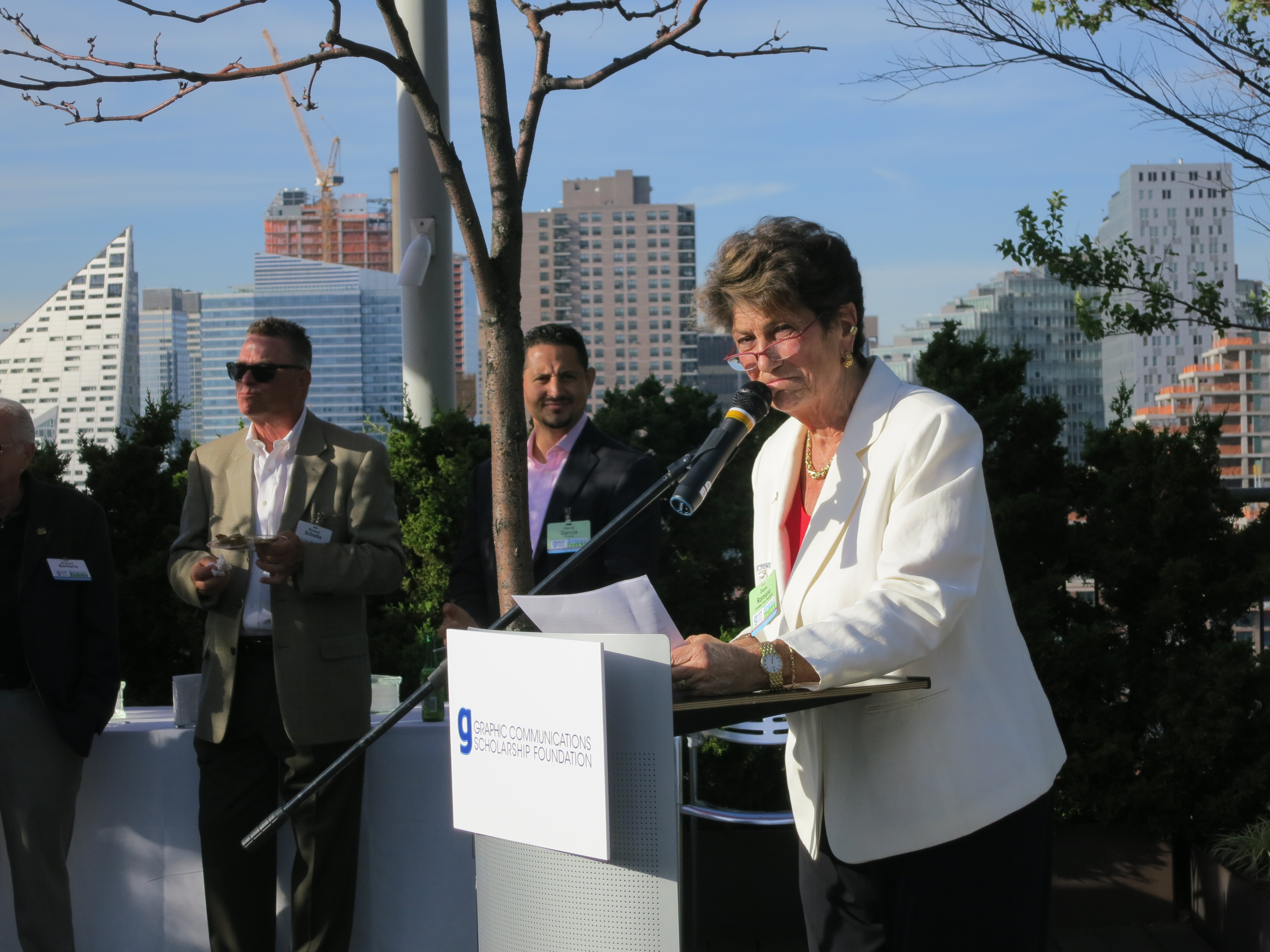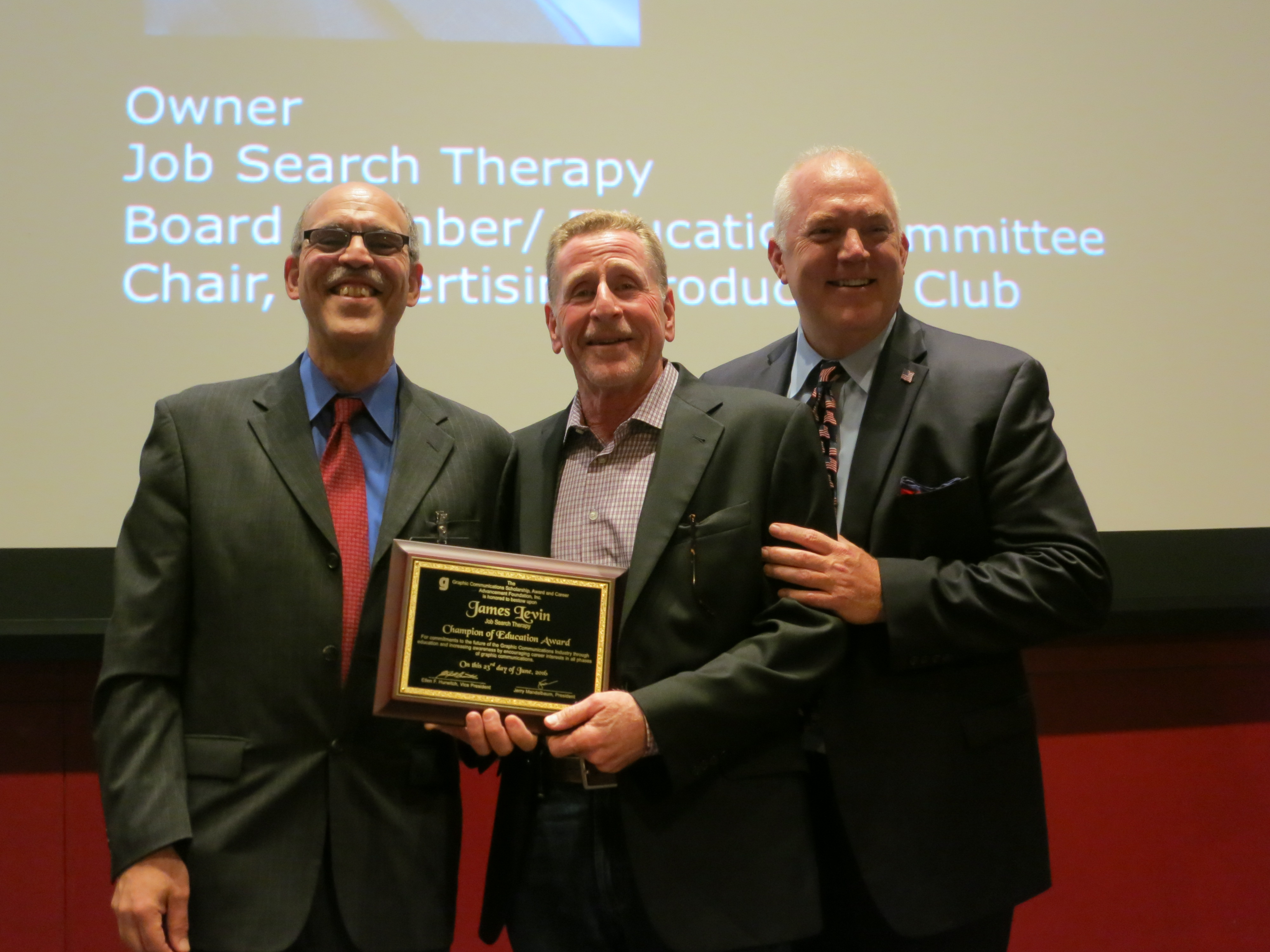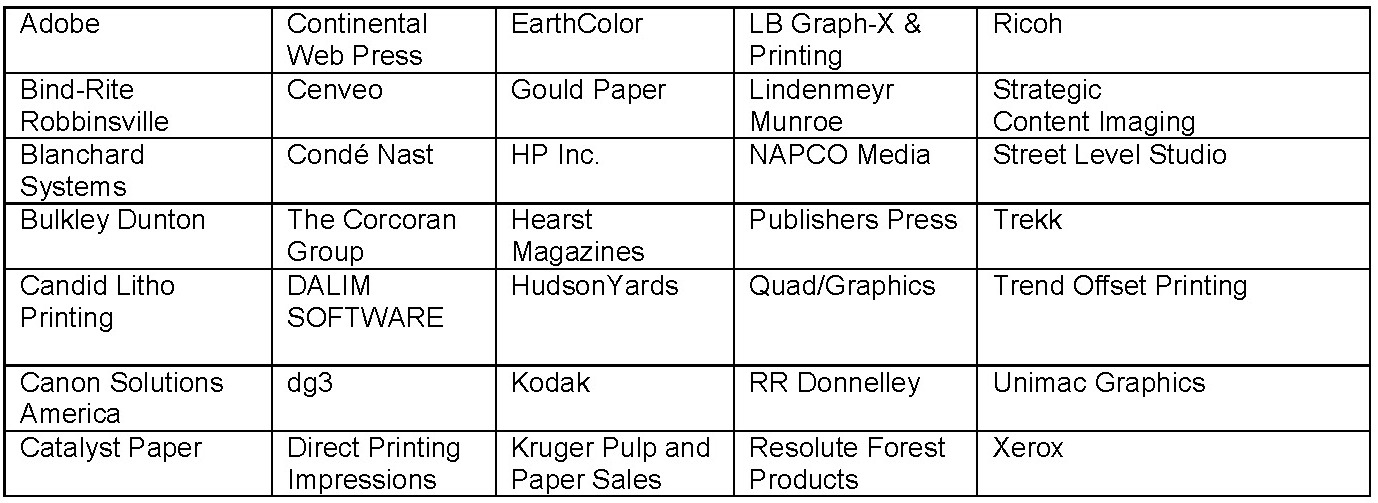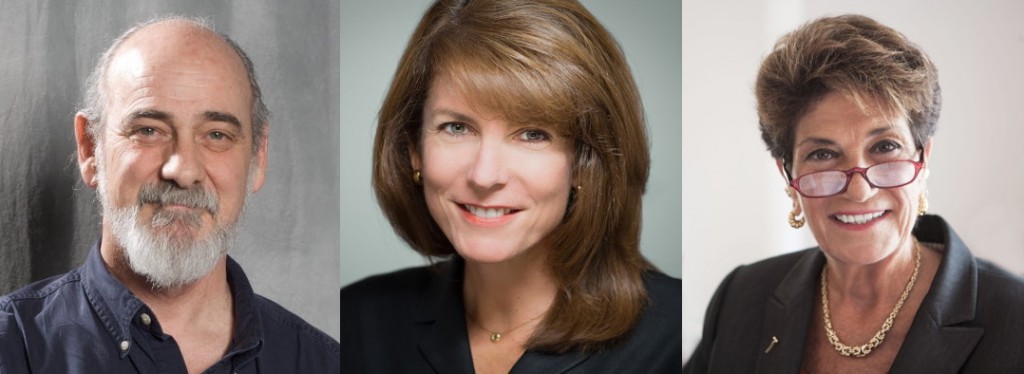Note: this post first appeared in a special issue of Signature, the newsletter of Printing Industries Alliance.
“It was just a day – blue skies, a clear day. It began as a very unremarkable, done-it-a-thousand-times kind of day.” So remembers printer Benjamin Hort of his first moments at work on September 11, 2001, about two miles north of the 14.6-acre patch of land that was about to pass violently into history as Ground Zero of the World Trade Center terror attacks.
For Vicki Keenan, an executive of a printing trade association, 9/11 opened with the unimaginable sight of a jet airliner slamming into one of the Twin Towers as she approached Manhattan on her morning rail commute. It ended with the wrenching news that a close personal friend – a New York City Fire Department chaplain with whom she’d lunched just the day before – had been identified as one of FDNY’s first casualties in the disaster.
In between, for Hort, Keenan, and nearly everyone else connected with New York City’s printing industry, stretched a day of anguish and destruction that claimed the lives of 2,763 people in the Twin Towers and shook the national psyche as it had never been shaken before.
Printing companies, concentrated in and around Canal, Varick, and Hudson Streets with a clear line of sight to Ground Zero, were closer to what happened that day than any of the city’s other manufacturing businesses. That awful proximity gave the people who worked at those companies memories that are as searingly vivid today as the actual events they witnessed, however unwillingly, 20 years ago.
Hort is president of Enterprise Press (Englewood, N.J.), a fourth-generation family business that at the time operated in a building it owned at 627 Greenwich Street. He began the day as he usually did at 8 a.m. in his office on the 10th floor.
The morning’s routine quickly evaporated. “I remember that someone remarked that there was smoke coming out of the first tower,” Hort says. “Nobody knew what it was, and we didn’t think that much of it.” A little while later, he heard the “yelling and screaming” as his staff watched the second plane find its target.
By midmorning, both towers had imploded. “That I did literally see with my own eyes,” says Hort. “It was fast – just go to smoke.”
Eyewitnesses say disbelief overcame them as the attacks unfolded, at least at first.
‘Another Orson Welles Thing’
Jack Kott, owner of Bergazyn & Son, a specialty finishing business located at 200 Hudson Street at the corner of Canal Street, says that when the planes struck the towers, his plant was “literally almost on top of it.” He admits that the initial reaction to reports coming from the media was, “here we go, another Orson Welles thing” (referring to The War of the Worlds, the famous radio broadcast of 1938 that triggered panic among listeners who took its fantastic story as fact).
The grim truth emerged when, in the elevator, a fellow printing tenant in the building asked him, “Did you just see the plane that barely missed our roof?” Gathering with others in a conference room on the sixth floor, says Kott, “we saw the first tower in flames, and then we saw the second plane hit. That apparently was the plane that had just missed our building.”
Now based in Long Island City, Cosmos Communications then did business on the 2nd floor at 175 Varick Street just north of Canal Street, about a half a mile from Ground Zero. At street level, COO and partner Joe Cashman and his staff found themselves staring straight at the north side of the North Tower moments after the impact at 8:46 a.m.
“We were down on the street less than a minute after the first plane hit,” Cashman recalls. “You could almost make out an indent of the fuselage. We just couldn’t understand how it was possible on such a clear, beautiful day that a plane could fly into the tower.”
‘The Whole Building Shook’
On the 9th floor of 233 Spring Street, two blocks north of Canal Street, trade printer CQS operated in a manufacturing “cluster” then typical of the industry in lower Manhattan, with other printing businesses on three floors of the building and a satellite pressroom on nearby Vandam Street. CQS pressroom foreman Robert (Bo) Donnelly had completed makeready on two presses and was awaiting visits by customers for press checks at 9 a.m.
Before the customers got there, he says, “the whole building shook” as the first plane passed over it at almost rooftop height. Donnelly didn’t witness the ensuing impact at Ground Zero, but he says that upon looking down Varick Street moments later, “we could see the hole in the North Tower” and the beginning of the inferno that would engulf the structure and cause it to collapse.
Then, like a “big missile,” the second jet punched into the South Tower at 9:03 a.m., setting it ablaze. “We watched the South Tower explode,” Donnelly says. “We saw the metal arcing” as if it were being welded. Soon after, the entire, 110-story building pancaked in a storm of smoke and debris.
“The way it went down was unbelievable,” he says. “About a half hour later, the North Tower started arcing – the metal was actually burning. Then that went down.”
Cashman recounts how he, too, “was watching the North Tower virtually sink in front of my eyes. I remember the TV antenna on top of the tower just wobbling as the tower sank. Your eyes were seeing something that your mind is not allowing you believe is happening.”
Radio reports brought news of the 10:28 a.m. collapse of the South Tower, which was the first of the pair to come down despite being the second one struck. Now the full dimensions of the attacks were becoming clear, but even so, “we were dumbfounded,” Cashman says.
From Bad to Far Worse
Looking on from a greater distance – but with no less horror – were Keenan and other employees of the Association of Graphic Communications (AGC), a trade group representing graphics businesses in the five boroughs, Long Island, and parts of New Jersey. Keenan, the association’s executive vice president, already had an inkling of what had happened by the time she reached AGC’s offices on Seventh Avenue at 29th Street.
“The train had just pulled out of Newark/Penn Station on its way into the city,” she says of the trip in from her home in New Jersey. “You go through the Meadowlands, and I had a window seat. I saw this plane in the sky, and then I saw it hit the tower, and there was a huge ball of fire. Both me and the guy next to me, and a couple of people in front and back of me, were saying, “Are we seeing that right? Did a plane just hit a tower?”
At the AGC office, Keenan found most of the staff gathered in an adjoining suite that had a clear view of the crash sites. “As soon as I walked in, somebody shoved a pair of binoculars into my hand and said, ‘You’ve got to see this.’ And you could see everything that was going on. The building was obviously on fire.”
Now the terrible meaning of the attacks was starting to sink in. Keenan can’t forget the desperation of a receptionist whose father worked at Windows on the World, the posh restaurant on the 107th floor of the North Tower.
The receptionist, according to Keenan, “was hysterical on the phone. She couldn’t get her father or mother, and that was one of the phones that was still working. She just left immediately. I know that her father couldn’t have made it out of Windows On The World.”
Fateful Choice Indeed
As it always does in disasters, chance had a say in who fell victim to the events of 9/11, and who didn’t. On that day, Randy Colahan’s decision to prioritize his voluntary role as a member of AGC may well have saved his life.
At the time, Colahan was a partner of Colahan-Saunders Corp., a commercial printer in Long Island City. He also chaired the trade association’s awards committee, which was to meet that morning in an office tower near Penn Station.
As a printer, says Colahan, “I did a lot of business in the Trade Center. I was in one of the Trade Center buildings each of seven work days before (9/11). I was actually scheduled to be there for a 9 o’clock meeting at 7 World Trade, but I had that meeting with AGC. We looked out just as the second plane hit.” (7 World Trade Center, set ablaze by debris falling from the North Tower, was the third building to be destroyed at Ground Zero as a result of the 9/11 attacks.)
By this time, an unprecedented mass exodus from lower Manhattan had begun. Retreating on foot, Donnelly saw what he describes as “complete chaos and panic” in the streets as dazed, ash-blanketed people emerged from the subways along the way.
A fighter plane screaming low over Third Avenue heightened the terror: “We had no idea who it was, whether it was one of our jets.” Donnelly hiked all the way north to the George Washington Bridge, hitched a ride across with a kindly stranger, and eventually made his way to his home at the time in Rockland County.
“I was one of the last cars to get out of the Midtown Tunnel before they closed it down,” Colahan says. On the loop to the Brooklyn-Queens Expressway on the Queens side, “all of these people had parked their cars and were taking pictures as the first tower came down. The second tower followed, and we could see the smoke from the top of our building.”
A Pageant of Pain and Woe
However majestic and iconic they may be, buildings remain inanimate objects whether they stand or fall. The only true measure of a catastrophe like 9/11 is the suffering of the human beings inside them. For printers in the vicinity of Ground Zero, scenes of human catastrophe were almost indescribable.
Worst of all to behold were the ordeals of the people who could find no way out of the Twin Towers as they burned. “It was surreal,” recalls Eric Tepfer, then a partner in CQS. He says he and his staff watched “with a sense of helplessness” as people trapped on floors being incinerated above the points of impact signaled frantically for help and then, all hope lost, hurled themselves to the pavement below.
Looking on during those final, agonizing moments, Tepfer says, “we were rooting for them. It was almost as if we knew them. Then watching them jump one by one – I’ll never forget that.”
Donnelly, likewise, can’t erase his mental image of one white-clad victim who held out to the limit of his endurance, beseeching rescue. “He was just there for so long, he tried so hard, and then he dropped. To this day, it still haunts me.”
On 9/11, printers bore witness to death in other, equally heartbreaking ways.
Moments after seeing the second plane hit, Kott found himself taking part in a conference call with a client and the client’s customer, a representative of Cantor Fitzgerald, whom they implored to evacuate that financial firm’s premises in the stricken North Tower. Kott says the Cantor Fitzgerald representative demurred, insisting that the situation was under control.
“Needless to say, you know what happened to the people who worked at Cantor Fitzgerald,” says Kott. Close to 700 of them – everyone who had reported to work at One World Trade Center that morning – died when the building came down.
Seared into Hort’s recollection of the day is an encounter with a tenant of his on the 11th floor of 627 Greenwich Street, a graphic designer whose boyfriend had become trapped in one of the towers. “She had just got off the phone with him, and I believe he had said, ‘I’m not going to get out.’ And indeed, he did not. That made it seem real, immediately,” Hort says.
‘Did Me in Completely’
Keenan spent the day making sure that her staff got safely out of Manhattan while she also tried, mostly without success, to determine the status of her members in the downtown printing district. Home again around midnight, she learned from television reports that FDNY chaplain Mychal Judge, her luncheon companion of the day before, was among the 343 firefighters lost in the department’s doomed effort to save the towers and their occupants.
“They said he was the first body they brought out, and I just lost it completely,” Keenan says. “Knowing that he was killed just really did me in completely that day.”
Throughout 9/11, printers also witnessed the plight of survivors who literally were left speechless by what they had gone through at Ground Zero. “People were walking up Varick Street and Sixth Avenue all covered with soot,” Tepfer recalls. There was an eerie silence. No one was talking, but it was a horrific scene. Everybody was stunned. Everything was in a daze.”
After sending their staff home, Kott and his general manager made their way to the street, where they watched “a huge white cloud” of smoke and cinder billowing northward from the crash sites. The two men purchased cases of water from a bodega on the corner of Hudson Street and began handing bottles to escapees as they staggered past, many in bloodstained clothing.
“It was scary,” says Kott, thinking in particular of one man to whom he gave water. “We though initially that he was bleeding, because his shirt was covered in blood. I looked at him and said, ‘Hopefully, that’s not yours.’ He said, ‘It’s not mine, it’s my neighbor’s.’ That image of this gentleman, I will never forget.”
Cashman also remembers the ghostly parade up Varick Street as survivors picked themselves out of the wreckage. “Everybody looked exactly the same, covered in gray soot.” He says he and his employees spent most of the rest of the afternoon offering the victims water, cell phone calls, bathroom access, and whatever other small comforts they could provide.
Next Morning, ‘a Very Weird Day’
As endless as the day must have seemed, night finally fell on 9/11 and the destruction it had wrought. The next morning, Cashman managed to return to his office after first attempting to donate blood at St. Vincent’s Hospital near 14th Street (only to be told that owing to the extreme fatality of the event, blood for transfusion into the living wasn’t going to be needed).
He remembers it as “a very weird day” emotionally, made odder still by a call from a customer who was “yelling at me because his package wasn’t going to get out via FedEx.” Hort had a similar experience. “The printing business is funny,” he says. “I had customers calling me the next morning and asking me, am I going to get my proofs today?”
In the ensuing days, 9/11 and its aftermath would come to mean different things to different printers.
No firm was hit harder than the Francis Emory Fitch Company on Liberty Street, located so close to the South Tower that its collapse obliterated the plant and everything it contained. Almost miraculously, according to a profile of the company published in a trade journal several years later, the company was delivering work to customers in two days with the help of other printers. It eventually re-equipped and found new quarters on West 28th Street, where the 135-year-old firm now does business as the Fitch Group.
Companies that were spared physical damage still had to contend with business loss, as many in the immediate vicinity couldn’t resume operations until the districts below Canal Street had been fully reopened to traffic. The difficulty then, according to Tepfer, was that printers could find little to produce in the wake of the attacks.
“There was no new business,” he says. “Anytime a customer would call, it would be to cancel a job. There was no interest on behalf of anyone to print. I would cringe every time the phone rang.”
“It was like the bottom dropped out of downtown, as far as printing goes,” Donnelly concurs.
Business was already slow; it became slower,” comments Keenan. “People didn’t have a lot of money, and they were really reluctant to part with their dollars unless they were absolutely assured of a 100% return. Nobody could assure that anywhere.”
Too Much to ‘Claw Back’
“The overall impact on the industry was devastating,” according to Kott. “It impacted my business immediately. We were closed for two weeks. There was no material damage, but there was a lot of financial damage. We lost between $100,000 and $200,000 worth of business.”
The loss, says Kott, was a reversal of fortune from which his small company never completely recovered. “Where do you claw back $100,000 to $200,000 worth of work?” he asks. “It just wasn’t there.” At the same time, some of his Manhattan-based clients were starting to move elsewhere, taking their jobs with them.
“It made it tough to continue,” acknowledges Kott, who sold the company in 2003 to focus on advocacy and fundraising for print industry education.
The cumulative effects of 9/11 and its aftermath took a toll both at CQS and among metro area printers in general, according to Tepfer. “It did bring a big change to the psychology of the people at the company,” he says. “Those who were extremely committed, stayed. Those who weren’t used this as a moment to say, ‘Hey, wait a second, I don’t know if this is coming back, if this is what I want to do, if I want to go on struggling like this.’”
Tepfer also points out that because so much of the printing produced in lower Manhattan was “Wall Street driven,” the loss of that business after 9/11 could not have been anything other than ruinous for many.
“That changed completely,” he says, citing a “shift in mindset” and a shunning of Manhattan that he compares with the depopulation of the borough’s central business district during COVID-19.
Once something like this occurs, Tepfer observes, “things never come back to the way they are.” He adds that CQS’s acquisition by HighRoad Press in 2004 “was a real outgrowth of what happened on September 11.”
Norm-Changing ‘Shock Waves’
“There have been a number of things in my history in printing where I found that you go through these shock waves, these big changes, and you see that business never gets back to the same,” says Colahan, citing the 2008-2009 recession and the present pandemic as examples.
“We had a very busy time in 2000 and 2001, and all of a sudden, it was such a dramatic change. Business moved away from offset. Business also moved away from having to be so close to Manhattan. It shifted to being more just-in-time printing, less inventory of material, so that you didn’t inventory something that could become obsolete.”
Printers also had to learn to rethink customer relationships, according to Colahan. He says that recovering from 9/11 meant “making more contacts – you’re not just relying on our existing clients for everything. Once you had a client, it used to be, if you didn’t screw up, you’d never lose them. That whole model changed.”
Others are less inclined to see 9/11 as an inflection point. In Hort’s opinion, 9/11 was not an all-transforming episode for Manhattan’s printing industry, but an acceleration of an upheaval it was already undergoing.
“There were too many printers on Canal Street and Hudson Street,” he explains. “There had to be some attrition. There was too much metal – too many people doing it.” The need for equipment and personnel was being reduced by the digitization of prepress and other kinds of automation, Hort adds. Beyond that, “there was a glut of capacity” that the area’s printers could never fully utilize with the volume of work available to them.
“9/11 is not why there isn’t much of a printing industry on Canal Street anymore,” Hort concludes. “For printers in lower Manhattan, the die was already cast.”
That squares with the view of consumables industry veteran Michael Brice, who was then supplying printers throughout the metropolitan area as an executive of Superior Printing Ink. “There was a trend anyway, prior to that, of facilities moving out of New York as it was too expensive to operate, and logistically it was tough. Obviously, with real estate becoming more valuable as lofts, residential, I think that was afoot already.”
“For some people that lived in New York, it might have given them some pause to do business in an epicenter like that, whereas they could be outside, with less interruption,” Brice continues. “I’m sure that entered some people’s minds, and maybe it pushed them over the edge. I think that the push to get out of New York for more space, lower costs, and other operating advantages was going on, and I don’t know whether (9/11 itself) had a major effect.”
‘Last Printer in Manhattan’
In 2008, in the throes of recession, Cosmos Communications moved to its present home in Long Island City despite having renewed a 10-year lease at 175 Varick Street. Cashman doesn’t count the long-term impact of 9/11 as a factor in the decision.
“The industry was already in a moving cycle out of Manhattan,” he says, noting that the trend was driven in part by New York City programs aimed at relocating printers to the Brooklyn Army Terminal and other locales in the outer boroughs. “Our goal was to end up being one of the last printers in Manhattan.” Cosmos Communications hung on to that distinction, Cashman says, “until it became economically impossible to operate” where it was.
Despite everything, Manhattan still supports a printing industry, and many of those who remember its worst day from first-hand experience 20 years ago continue to work steadfastly in the trade. Some of them can mingle their harshest impressions of 9/11 with recollections of a more uplifting kind.
That day, Hallie Satz was struggling to get back to her business and her family from a trade show in Chicago after air travel across the nation had been grounded (see sidebar below). When she finally reached home, she detected solidarity as well as sadness in the hearts of her industry peers.
“In some ways, everyone was very unified,” she says. “That was a great thing, for a short period of time. You had all of this unity and camaraderie amongst the printers. Everyone was speaking with one another – that came out of it for a while. On the positive side, right after 9/11, all the printers were talking to each other.”
‘U.S.A, U.S.A.’
Cashman describes feeling another kind of unanimity “the next day, standing on the corner of Sixth Avenue and Houston Street with hundreds and hundreds of people, just cheering the firemen, the firetrucks, the emergency services, every truck that went by. We stood there for what seemed like hours, chanting ‘U.S.A., U.S.A.’ In some ways, it brought all of us closer together. It was a great effect of a horrible event.”
Both memories speak to the resilience of an industry whose history will always be entwined with the terrible events of 9/11. “I give great credit to the companies that did survive that whole thing,” Keenan says. “Because those people (had) the perseverance, patience, and just sheer will and determination that they were not going to lose their firms, that they were not going to go out of business.”
“You can’t intimidate a New Yorker or somebody from New Jersey,” Keenan declares. “I think that without that spirit, you wouldn’t even have an industry today.”
Sidebar: The Long Way Home
A printer didn’t need to be south of Canal Street on September 11, 2001 to see his or her life and business thrown into turmoil by the day’s deadly attacks. Hundreds of New York metro area printing personnel attending the Print 01 trade show in Chicago learned this the hard way as they found themselves abruptly cut off from their scheduled flights home.
Among them was Hallie Satz, currently president of HighRoad Press in Moonachie, N.J. At the time, she was president of the Barton Press division of EarthColor, a Parsippany, N.J. print network that is now part of Mittera Group. On the morning of 9/11, Satz and a large contingent of other EarthColor executives and managers were present at Print 01 for a panel discussion featuring Robert Kashan, their CEO.
Satz got the bad news at breakfast when her husband called to say, “A plane has hit the towers.” Initially, she recalls, reality had a hard time taking hold. “Everybody had a different idea. Some people were thinking it was just a fluke, or an accident. Others were saying no, no, no, this was an attack.” Her immediate thoughts were of her children at home in New Jersey, then 11, 10, and 8.
The panel presentation went on as scheduled, “but as Robert (Kashan) was speaking, the second plane crashed,” Satz says. By this point, the scene at the McCormick Place expo center was frantic, with cell phones dead, people dashing to their hotels, and everyone who didn’t live in the vicinity desperate to find a way out of Chicago.
The EarthColor group, 15 strong, found theirs in a pair of Winnebago vehicles that a member of the team managed to rent. Then began an eastward trek that Satz remembers with a mixture of discomfort and wry humor.
One of just two women in the group, she found herself sharing one of the vans with six men. “We had to go slow. They were not new Winnebagos. They were small,” says Satz, who sat cramped on a bench for the 36 hours the trip home would take. The behavior of her equally stressed traveling companions was sometimes less than cordial.
“You’re in this Winnebago with a lot of testosterone, a lot of fighting,” she says. “There was a lot of arguing going back and forth. I think they passed the time by fighting.”
Looking back at the day and its grim events 20 years later, Satz sums it up as “an instant change in life” that has some parallels with the disruption caused by the SARS-CoV-2 pandemic. “COVID of course was nothing like that, and yet, I’ll say as a printer, it was the only other time things really changed for all of us in printing,” she says.
Satz adds that one trait of the industry remained constant throughout the chaos of 9/11 and its aftermath. In printing, she observes, “everyone has always helped each other out. I don’t think there’s ever been a time in any tragedy or natural disaster where printers weren’t willing to help each other.


